
Besseggen Ridge: Norway's Majestic Mountain Adventure
Discover the breathtaking beauty of Besseggen Ridge in Norway's Jotunheimen National Park, where stunning lakes and rugged mountains create an unforgettable hiking adventure.
Besseggen Ridge, located in the breathtaking Jotunheimen National Park, is one of Norway's most iconic hiking trails. This ridge offers a stunning view of the turquoise waters of Lake Gjende on one side and the deep blue Lake Bessvatnet on the other. The dramatic contrast in colors, combined with the rugged mountainous landscape, creates a picture-perfect scene that hikers from around the world come to experience. The hike along Besseggen Ridge is a challenging yet rewarding journey, spanning approximately 14 kilometers. It typically takes 6 to 8 hours to complete, depending on your pace and weather conditions. The trail can be steep and rocky in sections, but the panoramic views of the surrounding peaks and valleys make every step worthwhile. Wildlife enthusiasts might also catch glimpses of local fauna, such as reindeer and various bird species. For those who prefer a less strenuous experience, there is an option to take a ferry from Gjendesheim to Memurubu and hike back over the ridge. This allows you to enjoy the spectacular scenery without committing to the full hike. Whether you're an experienced hiker or a nature lover looking for an unforgettable adventure, Besseggen Ridge is a must-visit destination in Norway.
Local tips in Besseggen Ridge
- Check the weather forecast before you go, as conditions can change rapidly in the mountains.
- Wear sturdy hiking boots and bring layers of clothing to adapt to changing temperatures.
- Start the hike early in the morning to avoid crowds and ensure you have ample daylight.
- Bring enough water and snacks, as there are no facilities along the trail.
- Consider taking the Gjendesheim to Memurubu ferry to shorten the hike if you have limited time or prefer a less strenuous option.
Besseggen Ridge: Norway's Majestic Mountain Adventure
Besseggen Ridge, located in the breathtaking Jotunheimen National Park, is one of Norway's most iconic hiking trails. This ridge offers a stunning view of the turquoise waters of Lake Gjende on one side and the deep blue Lake Bessvatnet on the other. The dramatic contrast in colors, combined with the rugged mountainous landscape, creates a picture-perfect scene that hikers from around the world come to experience. The hike along Besseggen Ridge is a challenging yet rewarding journey, spanning approximately 14 kilometers. It typically takes 6 to 8 hours to complete, depending on your pace and weather conditions. The trail can be steep and rocky in sections, but the panoramic views of the surrounding peaks and valleys make every step worthwhile. Wildlife enthusiasts might also catch glimpses of local fauna, such as reindeer and various bird species. For those who prefer a less strenuous experience, there is an option to take a ferry from Gjendesheim to Memurubu and hike back over the ridge. This allows you to enjoy the spectacular scenery without committing to the full hike. Whether you're an experienced hiker or a nature lover looking for an unforgettable adventure, Besseggen Ridge is a must-visit destination in Norway.
When is the best time to go to Besseggen Ridge?
Iconic landmarks you can’t miss
Jotunheimen National Park
Explore the stunning landscapes and diverse wildlife of Jotunheimen National Park, a must-visit destination for outdoor enthusiasts in Norway.
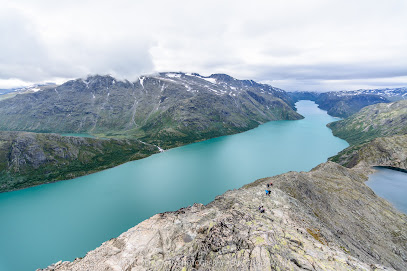
Galdhøpiggen
Discover Galdhøpiggen, Norway's highest mountain, offering breathtaking views and thrilling hiking adventures in the heart of Jotunheimen National Park.
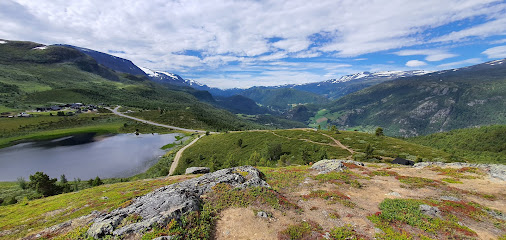
Gjendesheim DNT Cabin
Discover the serene Gjendesheim DNT Cabin, your gateway to Norway's breathtaking mountain landscapes and unforgettable outdoor adventures.
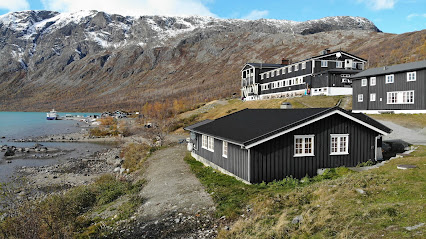
Bessheim Fjellstue og Hytter
Experience the charm of Bessheim Fjellstue og Hytter, a Norwegian retreat offering cozy stays and outdoor adventures in stunning natural surroundings.

Dalsnibba
Discover the stunning views and natural beauty at Dalsnibba, the breathtaking mountain peak near Geiranger, Norway.
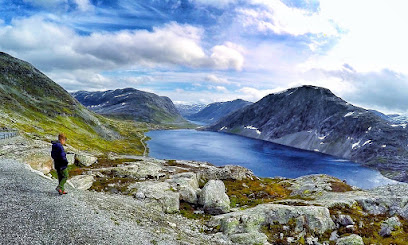
Mauranger - Besseggen
Experience breathtaking landscapes and outdoor adventures at Mauranger - Besseggen, your gateway to Norway's stunning fjords and mountains.

Jotunheimen
Explore the enchanting Jotunheimen mountain range in Norway, where breathtaking landscapes and outdoor adventures await every nature enthusiast.
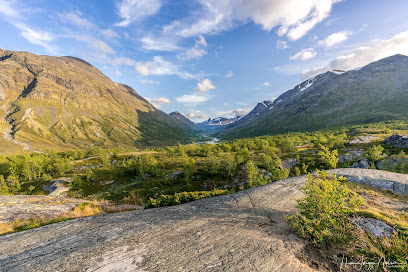
Memurubu
Discover the breathtaking beauty of Memurubu, a serene lodging on Lake Bygdin, surrounded by nature's wonders and thrilling hiking trails.

Steinplassen
Discover breathtaking views and outdoor adventures at Steinplassen, a must-visit vista point in Beitostølen, Norway.
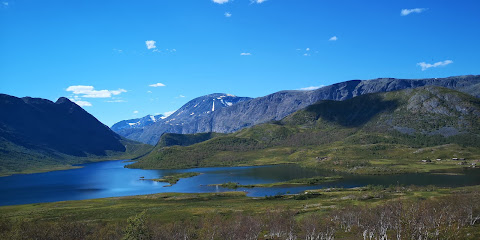
Norwegian fjellsenter
Explore Norway's cultural heritage and breathtaking landscapes at the Norwegian Fjellsenter in Fossbergom, a must-visit museum and visitor center.
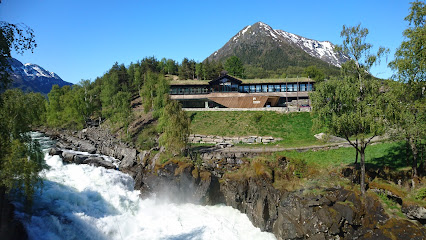
Hulderstigen
Explore the stunning landscapes of Hulderstigen, a captivating mountain trail in Tessanden, Norway, perfect for nature lovers and hiking enthusiasts.
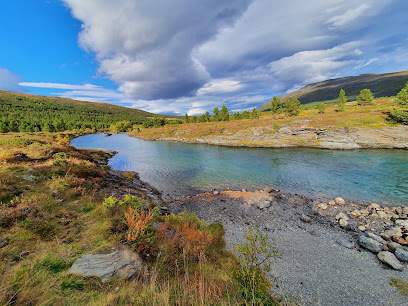
Bitihorn
Experience the breathtaking views and adventure of Bitihorn, a stunning mountain in Beito, Norway, perfect for outdoor enthusiasts and nature lovers.

Knutshøe
Explore the breathtaking beauty of Knutshøe, a majestic mountain peak in Tessanden, Norway, offering stunning views and unforgettable hiking experiences.
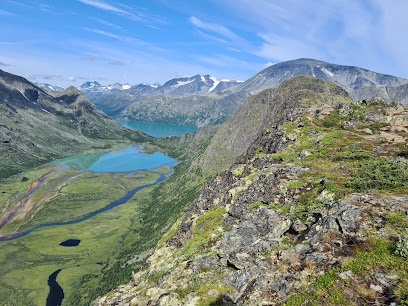
Nufshaug Scenic ViewPoint
Experience the breathtaking beauty of Nufshaug Scenic ViewPoint, a must-visit scenic spot showcasing Norway's stunning landscapes.
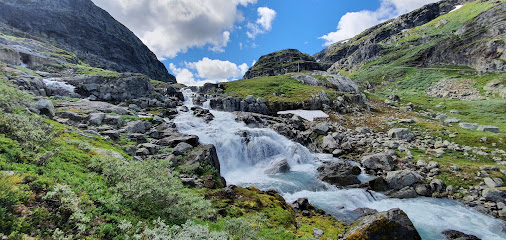
Gjende
Explore Gjende, Norway's stunning glacial lake, famed for its turquoise waters and breathtaking hiking trails in Jotunheimen National Park.
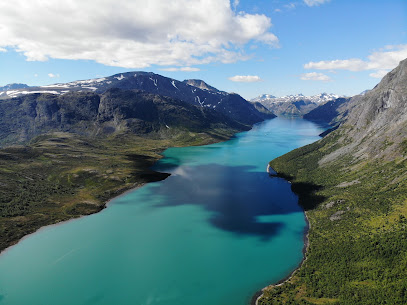
Unmissable attractions to see
Rampestreken
Discover Rampestreken: A breathtaking viewpoint in Åndalsnes, Norway, offering stunning panoramic views of majestic mountains and serene fjords.
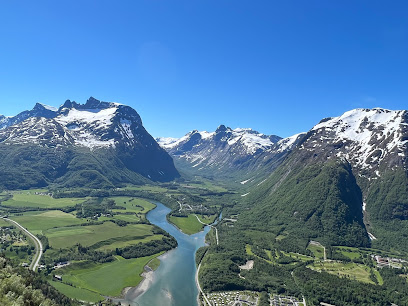
Gjendesheim DNT Cabin
Discover the breathtaking landscapes and adventure-filled activities at Gjendesheim DNT Cabin in the heart of Norway's mountainous terrain.
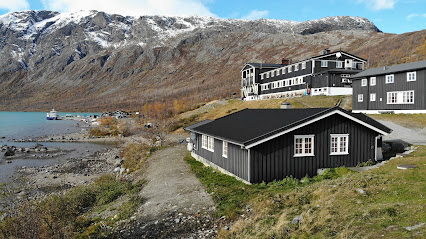
Mauranger - Besseggen
Explore the stunning trails and serene landscapes of Mauranger - Besseggen, a perfect destination for adventure seekers and nature lovers in Norway.

Jotunheimen National Park
Explore the breathtaking beauty of Jotunheimen National Park, Norway's majestic home of towering peaks, glaciers, and pristine wilderness.
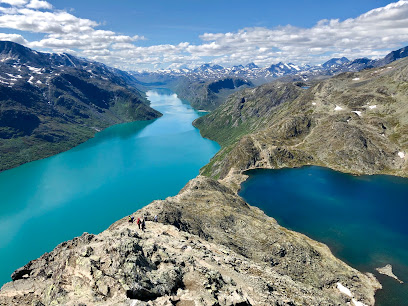
Gjende
Discover the captivating beauty of Gjende Lake, a turquoise jewel nestled in Norway's Jotunheimen National Park, perfect for adventurers and nature lovers.
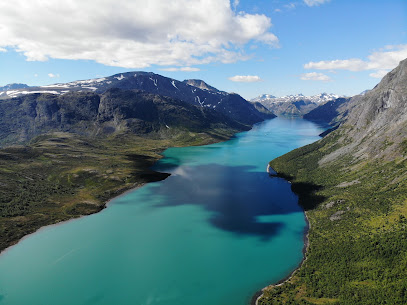
Besseggen
Explore Besseggen in Norway for breathtaking views, exhilarating hikes, and unforgettable natural beauty amidst majestic mountain landscapes.
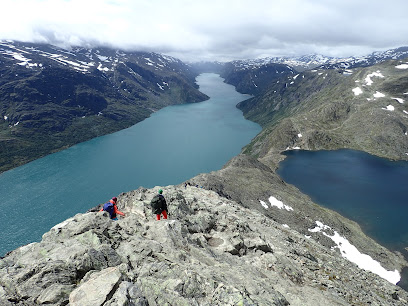
Besseggen 1
Explore the breathtaking Besseggen hiking area in Norway, where stunning landscapes and challenging trails await adventurous travelers.
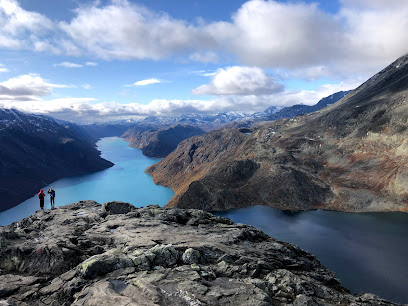
Skywalker Ridge
Discover the stunning panoramic views and serene landscapes at Skywalker Ridge, a must-visit tourist attraction near Otta, Norway.

Lake Gjende View Point
Discover the enchanting beauty of Lake Gjende View Point, a scenic gem in Norway, offering stunning views and unforgettable outdoor experiences.
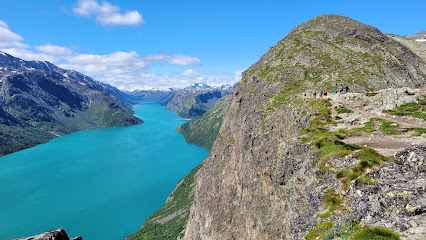
Essential places to dine
Gjendesheim DNT Cabin
Experience unparalleled natural beauty at Gjendesheim DNT Cabin in Norway's Jotunheimen National Park - a haven for hikers and nature lovers.
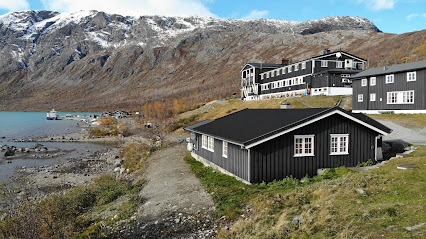
Lemonsjøen Fjellstue & Hyttegrend
Experience authentic Norwegian hospitality at Lemonsjøen Fjellstue & Hyttegrend – where comfort meets nature's beauty.
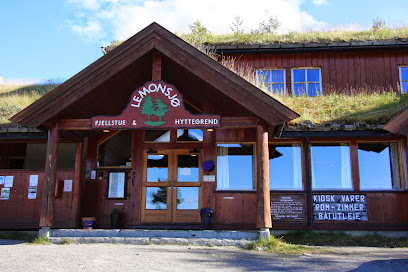
Bessheim Fjellstue og Hytter
Experience the charm of Bessheim Fjellstue og Hytter—your gateway to Norway's natural wonders with cozy accommodations and exquisite dining.

Mauranger - Besseggen
Explore the breathtaking beauty of Mauranger - Besseggen: A serene RV park nestled in Norway's majestic fjords with hiking trails and stunning landscapes.

Brimi Sæter
Discover Brimi Sæter: A charming farmstay in Garmo offering authentic Norwegian cuisine amid breathtaking natural beauty.
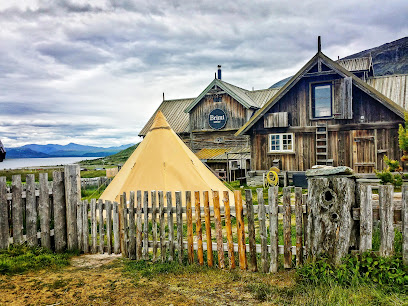
Røisheim Hotel
Experience traditional Norwegian hospitality at Røisheim Hotel in Bøverdalen – your gateway to stunning nature and outdoor adventures.

Hindsæter
Experience the tranquility of Hindsæter Hotel - your perfect getaway with exquisite dining and wellness in scenic Norway.

Besseggen
Explore Besseggen: A stunning hiking trail in Norway offering breathtaking views of turquoise lakes and majestic mountains.
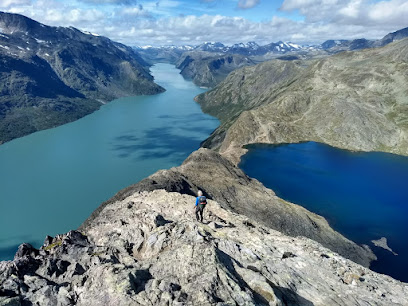
Jotunheimen Fjellstue
Experience the breathtaking beauty and adventure at Jotunheimen Fjellstue - your gateway to Norway's stunning landscapes.
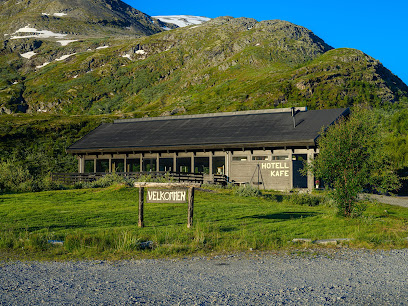
Memurubu
Discover Memurubu: Your gateway to Norway's breathtaking nature with serene lodgings perfect for adventure seekers.

Gjendeosen Kiosk
Experience authentic Norwegian cuisine at Gjendeosen Kiosk amidst stunning landscapes in Tessanden.
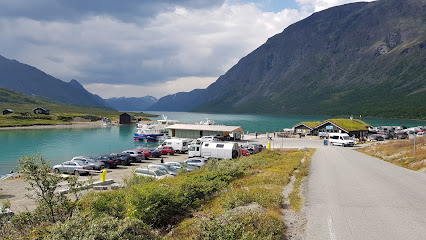
Besseggen 1
Explore Besseggen Ridge: A Must-Visit Hiking Destination in Norway with Stunning Views and Thrilling Trails.
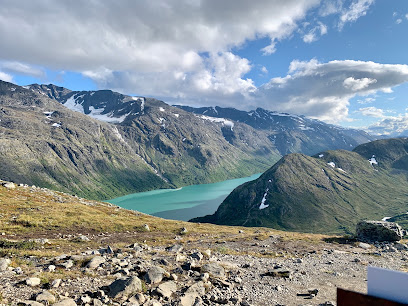
Markets, malls and hidden boutiques
Gjendesheim DNT Cabin
Explore the stunning Jotunheimen National Park from the cozy Gjendesheim DNT Cabin, where adventure meets tranquility in Norway's breathtaking mountains.
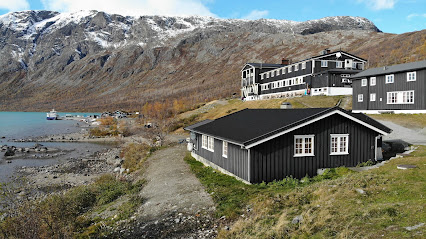
Bessheim Fjellstue og Hytter
Experience the breathtaking beauty of Norway at Bessheim Fjellstue og Hytter, your perfect mountain retreat for adventure and relaxation.

Mauranger - Besseggen
Discover the enchanting beauty of Mauranger - Besseggen, an ideal RV park and tourist attraction in Norway surrounded by stunning landscapes and outdoor adventures.

Besseggen
Explore Besseggen, Norway's iconic hiking trail, where stunning views, challenging paths, and natural beauty await every adventurer.
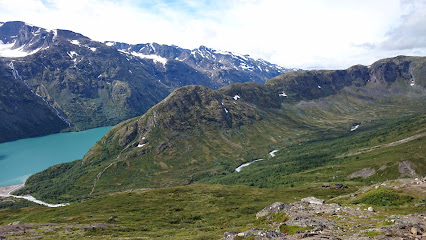
Besseggen 1
Discover the stunning beauty of Besseggen Ridge, an iconic hiking destination in Norway that offers breathtaking views and unforgettable adventures.
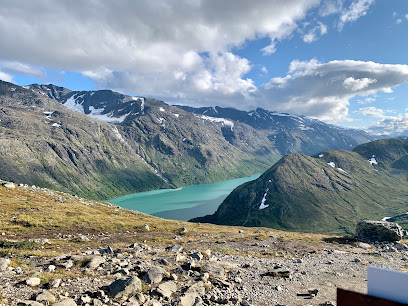
Essential bars & hidden hideouts
Bessheim Fjellstue og Hytter
Discover the beauty of Norway at Bessheim Fjellstue og Hytter – your perfect retreat for outdoor adventures and cozy accommodations.

Besseggen
Discover Besseggen, Norway’s breathtaking hiking and climbing destination, offering stunning views and unforgettable outdoor adventures.
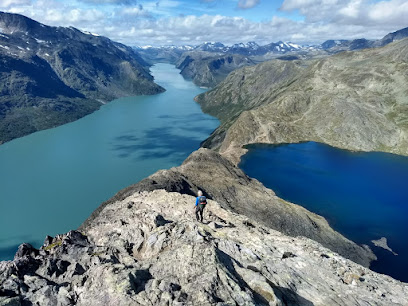
Svingen Pub
Experience the warm ambiance and local flavors at Svingen Pub in Beitostølen, where every visit is a celebration of community and good times.
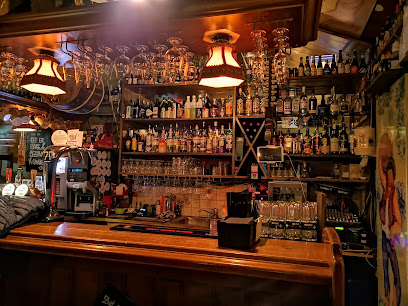
Gjendeosen Kiosk
Experience the culinary delights of Gjendeosen Kiosk, a perfect blend of local flavors and breathtaking Norwegian landscapes.
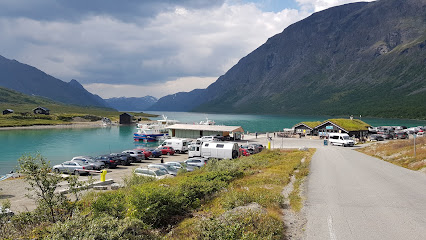
Local Phrases about Besseggen Ridge
-
- HelloHei
[hey] - GoodbyeHa det
[hah deh] - YesJa
[yah] - NoNei
[nay] - Please/You're welcomeVær så god
[vair soh goh] - Thank youTakk
[tahk] - Excuse me/SorryUnnskyld
[oon-skyld] - How are you?Hvordan har du det?
[vohr-dahn har doo deh] - Fine. And you?Bra. Og du?
[brah oh doo] - Do you speak English?Snakker du engelsk?
[snahk-er doo eng-elsk] - I don't understandJeg forstår ikke
[yehg for-stor eek-eh]
- HelloHei
-
- I'd like to see the menu, pleaseKan jeg få se menyen, takk
[kahn yehg foh seh men-yen, tahk] - I don't eat meatJeg spiser ikke kjøtt
[yehg spee-ser eek-eh sh-ot] - Cheers!Skål!
[skawl] - I would like to pay, pleaseJeg vil gjerne betale, takk
[yehg veel yern-eh beh-tah-leh, tahk]
- I'd like to see the menu, pleaseKan jeg få se menyen, takk
-
- Help!Hjelp!
[yel-p] - Go away!Gå vekk!
[goh vehk] - Call the Police!Ring politiet!
[ring poh-lee-tee-et] - Call a doctor!Ring en lege!
[ring en leh-geh] - I'm lostJeg er lost
[yehg air lost] - I'm illJeg er syk
[yehg air sook]
- Help!Hjelp!
-
- I'd like to buy...Jeg vil kjøpe...
[yehg veel sh-er-peh] - I'm just lookingJeg bare ser
[yehg bah-reh sair] - How much is it?Hvor mye koster det?
[vohr meu-eh kohs-ter deh] - That's too expensiveDet er for dyrt
[deh air for deert] - Can you lower the price?Kan du senke prisen?
[kahn doo sen-keh prees-en]
- I'd like to buy...Jeg vil kjøpe...
-
- What time is it?Hva er klokken?
[vah air klohk-en] - It's one o'clockKlokken er ett
[klohk-en air eht] - Half past (10)Halv ti
[hahlv tee] - MorningMorgen
[mor-gen] - AfternoonEttermiddag
[et-ter-meed-dahg] - EveningKveld
[k-vel] - YesterdayI går
[ee goh] - TodayI dag
[ee dahg] - TomorrowI morgen
[ee mor-gen] - 1En
[en] - 2To
[too] - 3Tre
[treh] - 4Fire
[feer-eh] - 5Fem
[fem] - 6Seks
[seks] - 7Syv
[seev] - 8Åtte
[aht-teh] - 9Ni
[nee] - 10Ti
[tee]
- What time is it?Hva er klokken?
-
- Where's a/the...?Hvor er en/et...?
[vohr air en/et] - What's the address?Hva er adressen?
[vah air ah-dras-sen] - Can you show me (on the map)?Kan du vise meg (på kartet)?
[kahn doo vee-seh may (poh kahr-teh)] - When's the next (bus)?Når går neste (buss)?
[nahr gohr neh-steh (booss)] - A ticket (to ....)En billett (til ....)
[en bee-let (teel)]
- Where's a/the...?Hvor er en/et...?
History of Besseggen Ridge
-
Besseggen Ridge was formed during the last Ice Age, some 10,000 years ago, by the immense power of glacial movements. The glacier carved out the dramatic landscape, creating the steep ridge that separates the emerald Gjende Lake from the deep blue Bessvatnet Lake. This geological wonder continues to attract geologists and nature enthusiasts from around the world.
-
The first documented exploration of Besseggen Ridge dates back to the early 19th century. Norwegian explorers, driven by a spirit of adventure and scientific curiosity, embarked on expeditions to map and understand the area. Their observations and sketches laid the foundation for future exploration and tourism.
-
In 1868, the famous Norwegian playwright Henrik Ibsen immortalized Besseggen Ridge in his epic poem 'Peer Gynt'. The tale of Peer Gynt's adventurous journey through the dramatic landscapes of Jotunheimen, including Besseggen, resonated deeply with readers. Ibsen's work significantly contributed to the cultural and literary significance of the region.
-
Founded in 1980, Jotunheimen National Park encompasses the Besseggen Ridge and surrounding areas, protecting its unique natural and cultural heritage. The park's establishment marked a significant step in the conservation of Norway's pristine wilderness, ensuring that future generations can enjoy the same breathtaking landscapes.
-
The 20th century saw a surge in outdoor recreational activities, with Besseggen Ridge becoming a premier destination for hikers and mountaineers. The trail, now one of Norway's most popular, attracts thousands of adventurers each year. Infrastructure improvements, such as well-marked trails and mountain lodges, have made the area more accessible while preserving its natural beauty.
-
In recognition of Besseggen Ridge's iconic status, the Norwegian Postal Service issued a special stamp in 1993 featuring the ridge. This philatelic tribute highlighted the ridge's importance as a national symbol of natural beauty and adventure, further cementing its place in Norway's cultural landscape.
Besseggen Ridge Essentials
-
Besseggen Ridge is located in the Jotunheimen National Park in Norway. The nearest major city is Oslo, from which you can travel to the town of Gjendesheim, the starting point for the Besseggen hike. From Oslo, you can take a train to Otta, followed by a bus to Gjendesheim. Alternatively, you can drive or take a bus directly from Oslo to Gjendesheim, which typically takes around 4-5 hours.
-
Once in Gjendesheim, transportation options are limited as it is a small town. The most common way to start the hike is by taking a ferry from Gjendesheim to Memurubu, which is the starting point for the hike over the ridge back to Gjendesheim. Pre-booking ferry tickets is recommended, especially during peak season. Taxis and car rentals are available but less common. Most tourists rely on walking or hiking to explore the area.
-
The official currency in Norway is the Norwegian Krone (NOK). Credit cards are widely accepted in hotels, restaurants, and shops in Gjendesheim and other parts of Norway. However, it is advisable to carry some cash for small purchases and in case you visit remote areas. ATMs are available in larger towns and cities, but not necessarily in smaller places like Gjendesheim.
-
Besseggen Ridge is generally a very safe destination for tourists. Norway has low crime rates, and Gjendesheim is no exception. However, standard safety precautions should still be taken. Keep your belongings secure and be cautious in crowded areas. The main safety concerns are related to hiking; ensure you are well-prepared with suitable clothing, sufficient water, and knowledge of the weather forecast. Always follow marked trails and avoid hiking alone.
-
In case of an emergency, dial 112 for immediate assistance. Gjendesheim has basic medical facilities, and more comprehensive healthcare services are available in nearby towns like Otta. It is highly recommended to have travel insurance that covers medical emergencies and accidents. For minor health issues, carry a basic first-aid kit and any necessary medications.
-
Fashion: Do wear appropriate hiking gear, including sturdy boots, weather-appropriate clothing, and a backpack with essentials. Avoid wearing flip-flops or casual clothing when hiking. Religion: There are no specific religious customs to follow, but always show respect for local traditions and customs. Public Transport: Do book your ferry tickets in advance. Don't rely on public transport for getting around locally, as options are limited. Greetings: Do greet people with a friendly 'Hei' (Hello) or 'God dag' (Good day). Norwegians appreciate politeness and formal greetings. Eating & Drinking: Do try local dishes like 'rakfisk' (fermented fish) and 'rømmegrøt' (sour cream porridge). Don't leave litter behind; always clean up after yourself, especially in nature.
-
To experience Besseggen Ridge like a local, consider visiting during the shoulder seasons (late spring or early autumn) to avoid the crowds. Engage with local hikers and ask for tips on lesser-known trails and viewpoints. Enjoy a meal at the Gjendesheim Turisthytte, a popular lodge among hikers, where you can taste traditional Norwegian food and share stories with fellow adventurers. Always respect the 'allemannsretten' or 'right to roam,' which allows public access to nature, but also comes with the responsibility to protect and preserve it.
Nearby Cities to Besseggen Ridge
-
Things To Do in Ålesund
-
Things To Do in Oslo
-
Things To Do in Bergen
-
Things To Do in Trondheim
-
Things To Do in Fredrikstad
-
Things To Do in Stavanger
-
Things To Do in Karlstad
-
Things To Do in Östersund
-
Things To Do in Kristiansand
-
Things To Do in Skagen
-
Things To Do in Örebro
-
Things To Do in Gothenburg
-
Things To Do in Frederikshavn
-
Things To Do in Västerås
-
Things To Do in Aalborg








